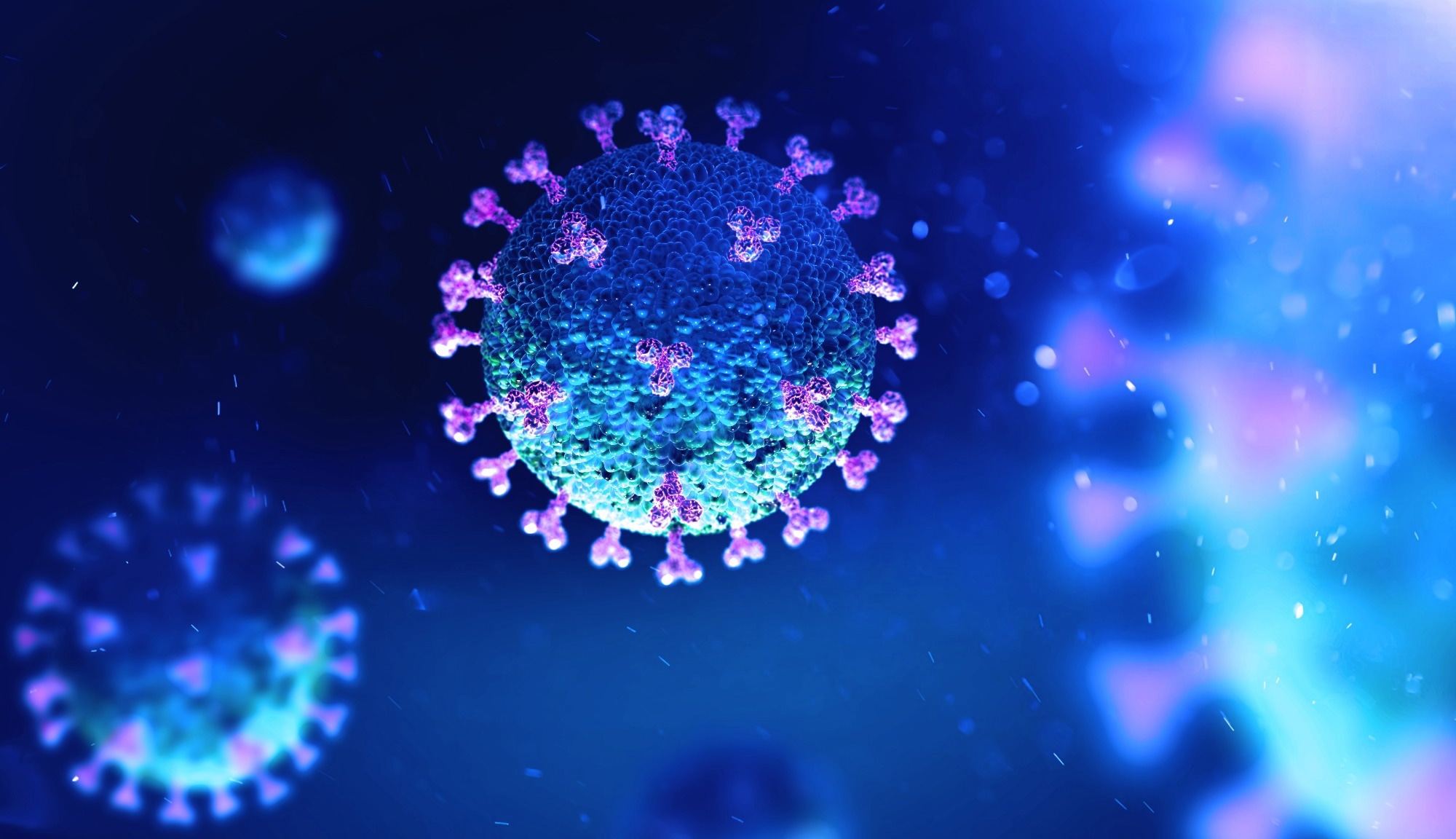According to an early study published in the open-access journal BMJ Open, wearable activity trackers that measure changes in skin temperature, heart rate, and breathing rate in combination with artificial intelligence (AI) may be used to detect COVID-19 infection days before symptoms appear.

Image Credit: Shutterstock.com/ Andrii Vodolazhskyi
The AVA bracelet, a controlled and widely used fertility tracker that measures blood flow, wrist skin temperature, breathing rate, heart rate variability, and heart rate, as well as quantity and quality of sleep, is the basis for the researchers’ results.
It may take a few days for typical COVID-19 symptoms to manifest following infection, during which an infected individual may accidentally spread the virus.
With the goal of allowing early separation and testing of persons with the illness, attention has begun to center on the possibility of activity trackers and smartwatches to monitor all stages of COVID-19 infection in the body from incubation to recovery.
In order to construct a machine learning system to identify COVID-19 infection before the onset of symptoms, the researchers sought to determine if physiological changes tracked by an activity tracker might be exploited.
Between March 2020 and April 2021, participants from the GAPP study (1163 in total, all under the age of 51) were selected. GAPP, which began in 2010, attempts to better comprehend how cardiovascular risk factors evolve in the general Lichtenstein population.
The AVA bracelet was selected because a machine learning system that detected ovulating women’s most fertile days in real-time with 90% accuracy was previously trained on data from the device.
The AVA bracelet was worn at night by participants. The gadget requires at least 4 hours of reasonably unbroken sleep and records data every 10 seconds. Upon awakening, the bracelets were synced with a matching smartphone app.
Participants used the app to document any activities that could affect how the central nervous system functions, such as drinking alcohol, using prescription medications, or using illicit substances, as well as any potential COVID-19 symptoms.
They all regularly had quick testing for the SARS-CoV-2 virus, which is the cause of COVID-19 infection. People who had warning signs had a PCR swab test as well.
Everyone supplied details on their own health, including their age, sex, blood type, number of children, exposure to family members or coworkers who had the COVID-19 virus, and vaccination history.
During the course of the trial, 127 participants (11%) acquired COVID-19. Between those who tested positive and those who did not, there were no differences in their backgrounds. However, a significantly higher proportion of those who did said they had been in contact with household members/regulars or work colleagues who also had COVID-19.
66 (52%) of the 127 people who tested positive for COVID-19 had worn their bracelet for at least 29 days prior to the onset of symptoms and were confirmed as positive by PCR swab test, therefore they were included in the study.
When compared to baseline measurements, the monitoring data showed that all five physiological markers significantly changed over the COVID-19 incubation, pre-symptomatic, symptomatic, and recovery periods. The average length of the COVID-19 symptoms was 8.5 days.
In a 40-day period of continuous surveillance of the 66 individuals who tested positive for SARS-CoV-2, the algorithm was “trained” using 70% of the data from day 10 to day 2 prior to the onset of symptoms. The remaining 30% of the data was used to test it after that.
Up to 2 days before the onset of symptoms, about 73% of laboratory-confirmed positive cases were detected in the training group and 68% in the test set.
The researchers acknowledge that their findings might not have wider applicability. The results were based on a very small sample of individuals from a single national center who were all very young—so less likely to have significant COVID-19 symptoms—and who were not ethnically diverse.
Additionally, the accuracy (sensitivity) attained was under 80%. The algorithm is currently being tested in The Netherlands on a much bigger population (20,000), with findings anticipated later this year, researchers claim.
The gold standard for determining COVID-19 infection is still a PCR swab test, although, “our findings suggest that a wearable-informed machine learning algorithm may serve as a promising tool for presymptomatic or asymptomatic detection of COVID-19,” the researchers suggest.
The researchers conclude: “Wearable sensor technology is an easy-to-use, low-cost method for enabling individuals to track their health and wellbeing during a pandemic. Our research shows how these devices, partnered with artificial intelligence, can push the boundaries of personalized medicine and detect illnesses prior to [symptom occurrence], potentially reducing virus transmission in communities.”
Journal Reference:
Risch, M., et al (2022) Investigation of the use of a sensor bracelet for the presymptomatic detection of changes in physiological parameters related to COVID-19: an interim analysis of a prospective cohort study (COVI-GAPP). BMJ Open. doi.org/10.1136/bmjopen-2021-058274.